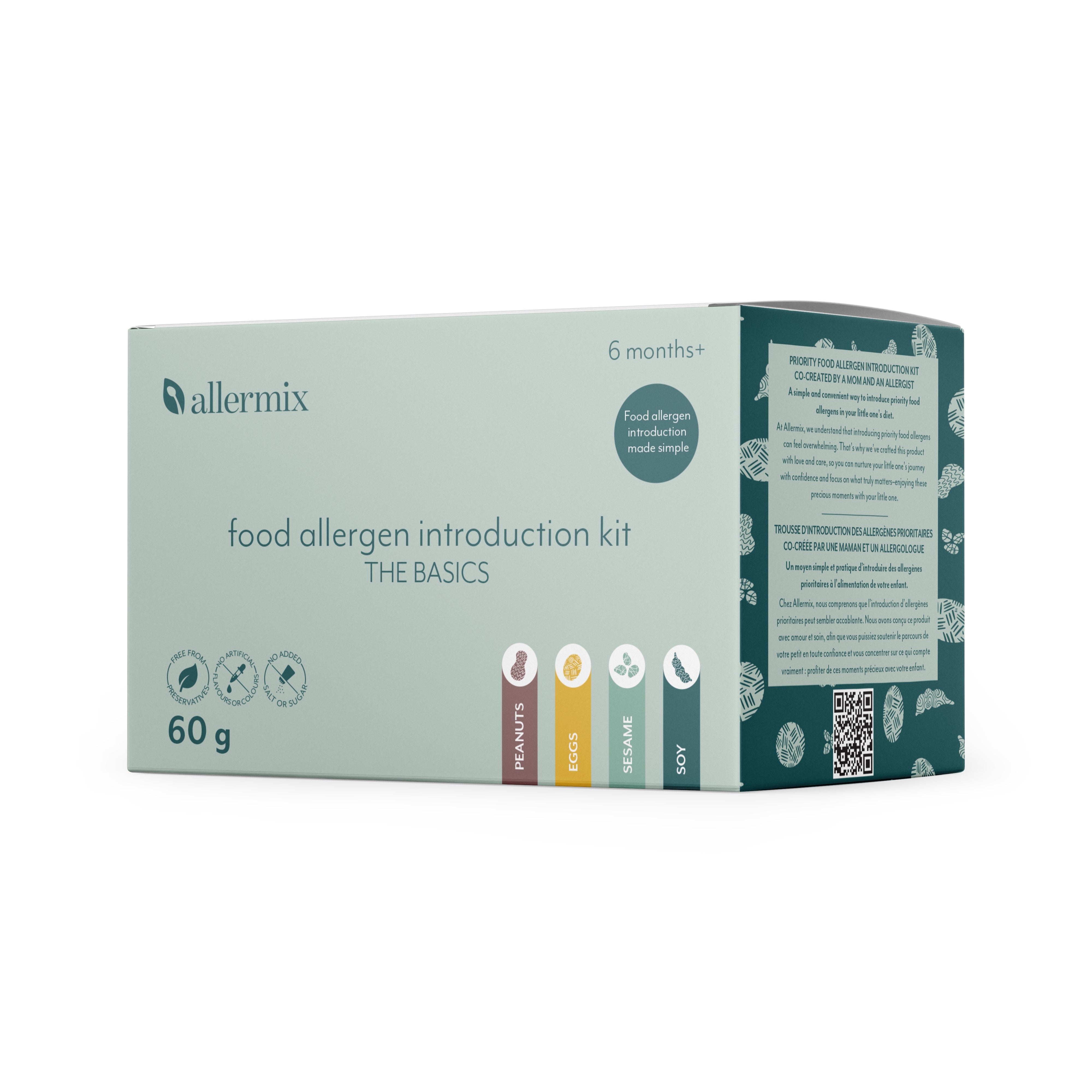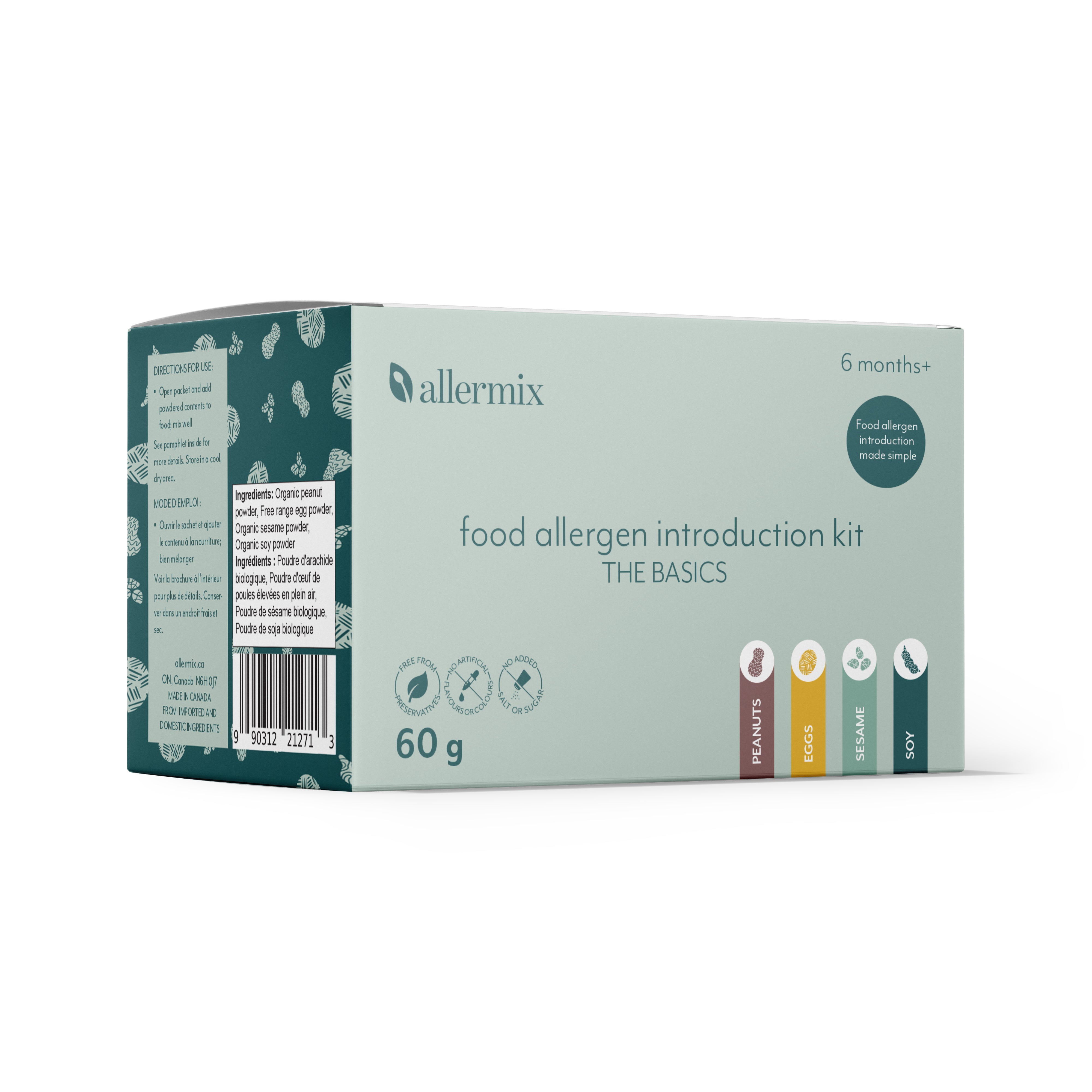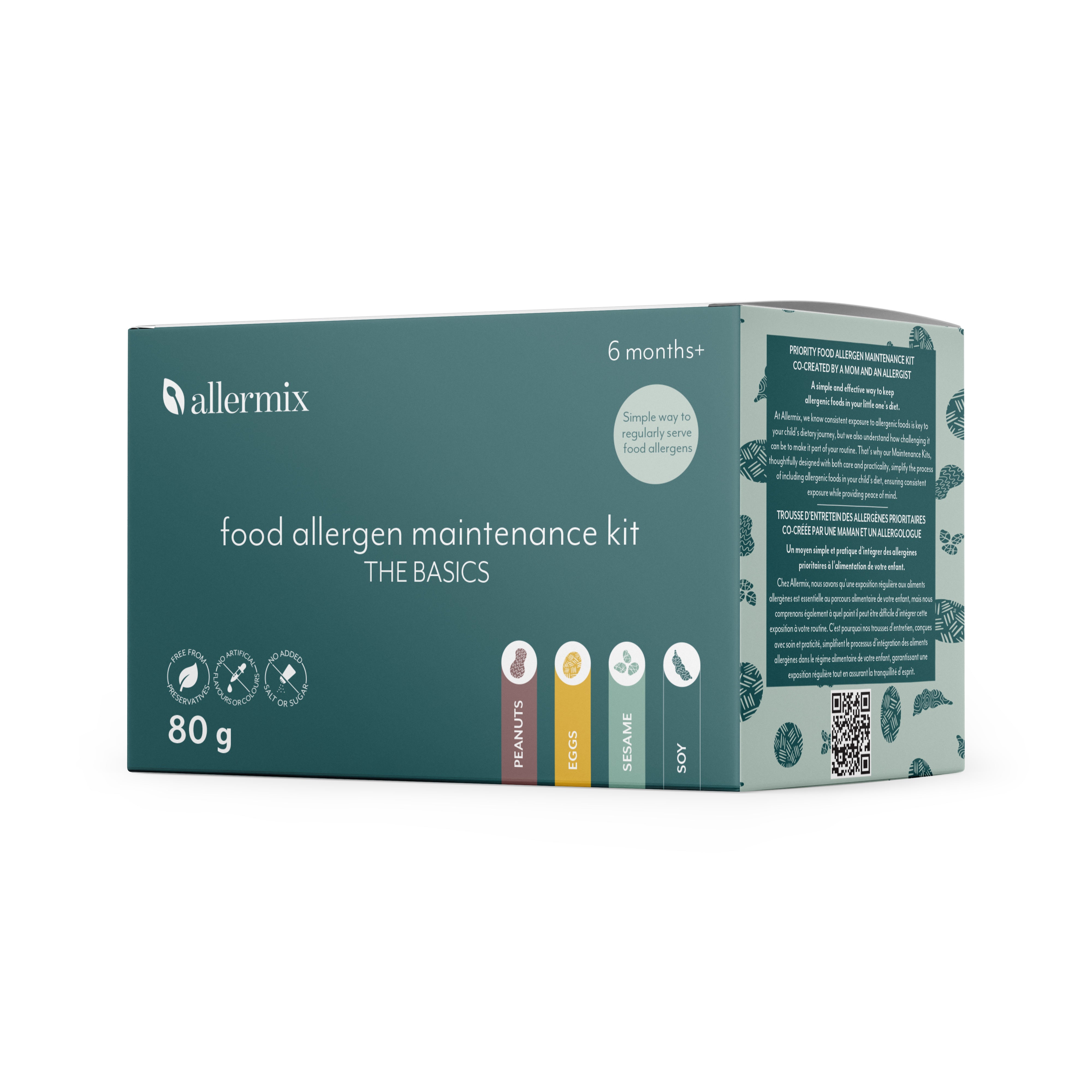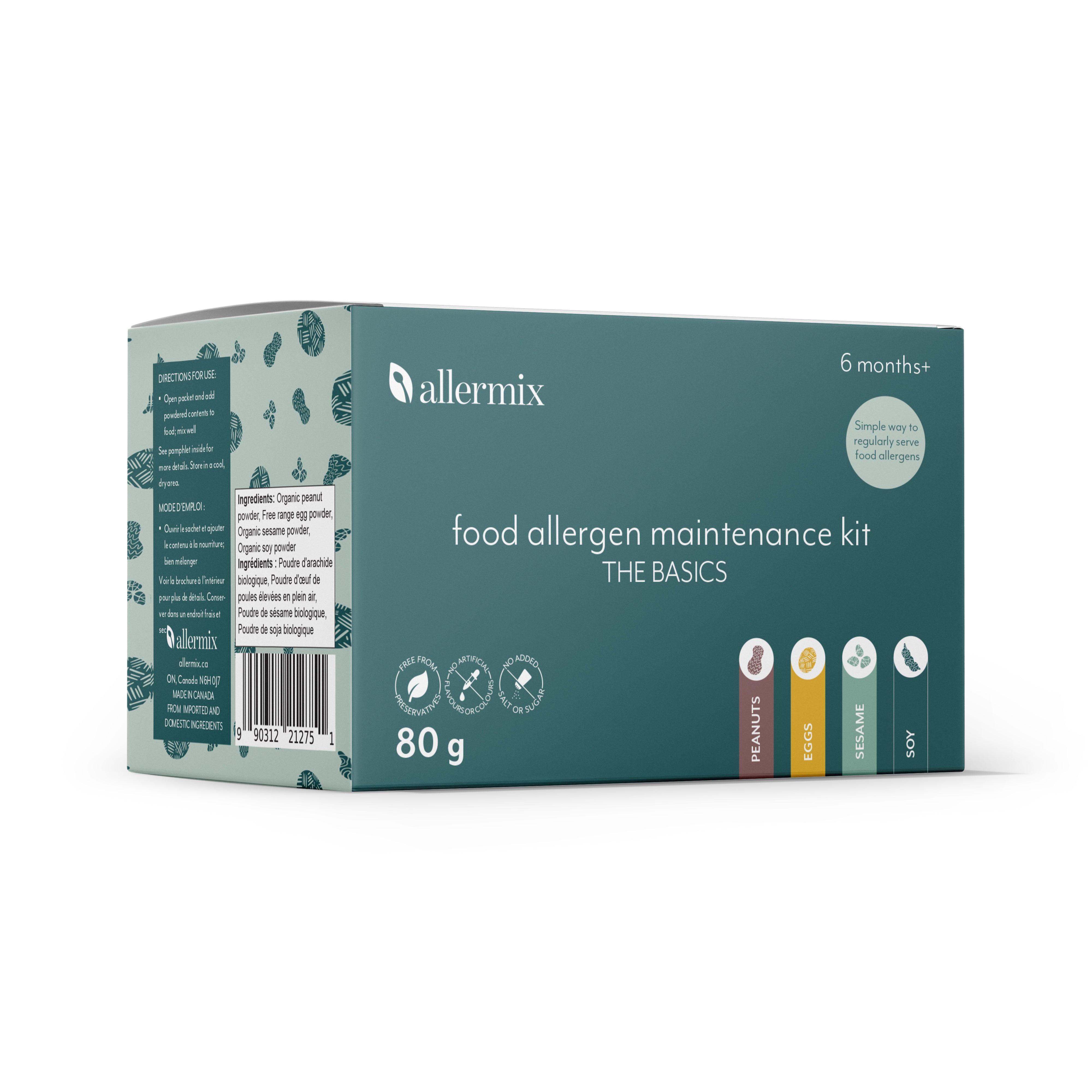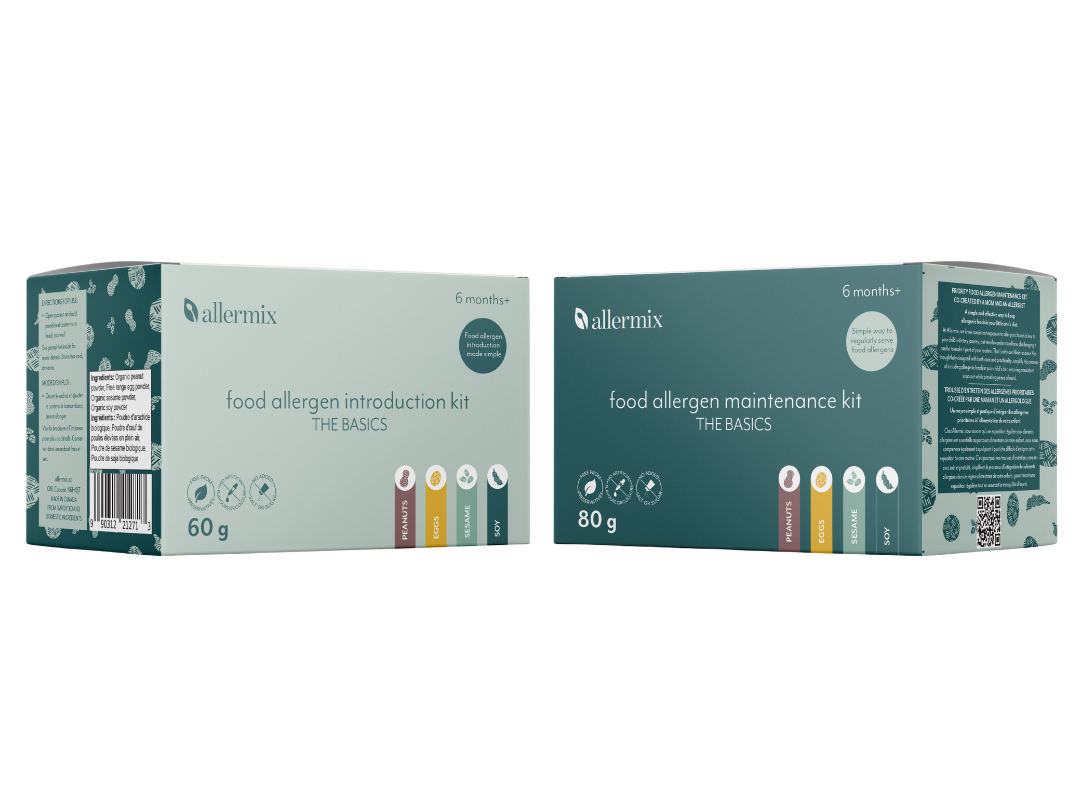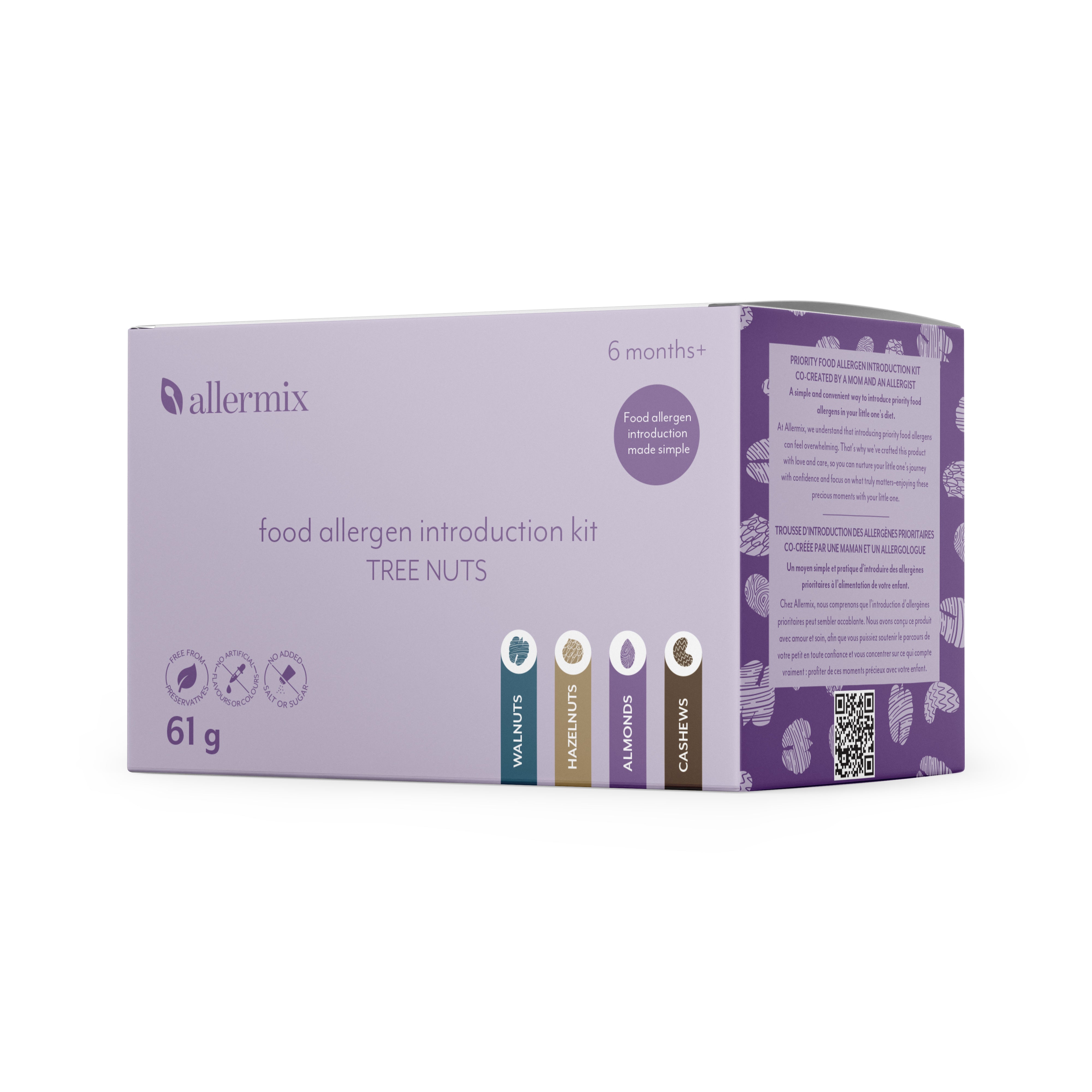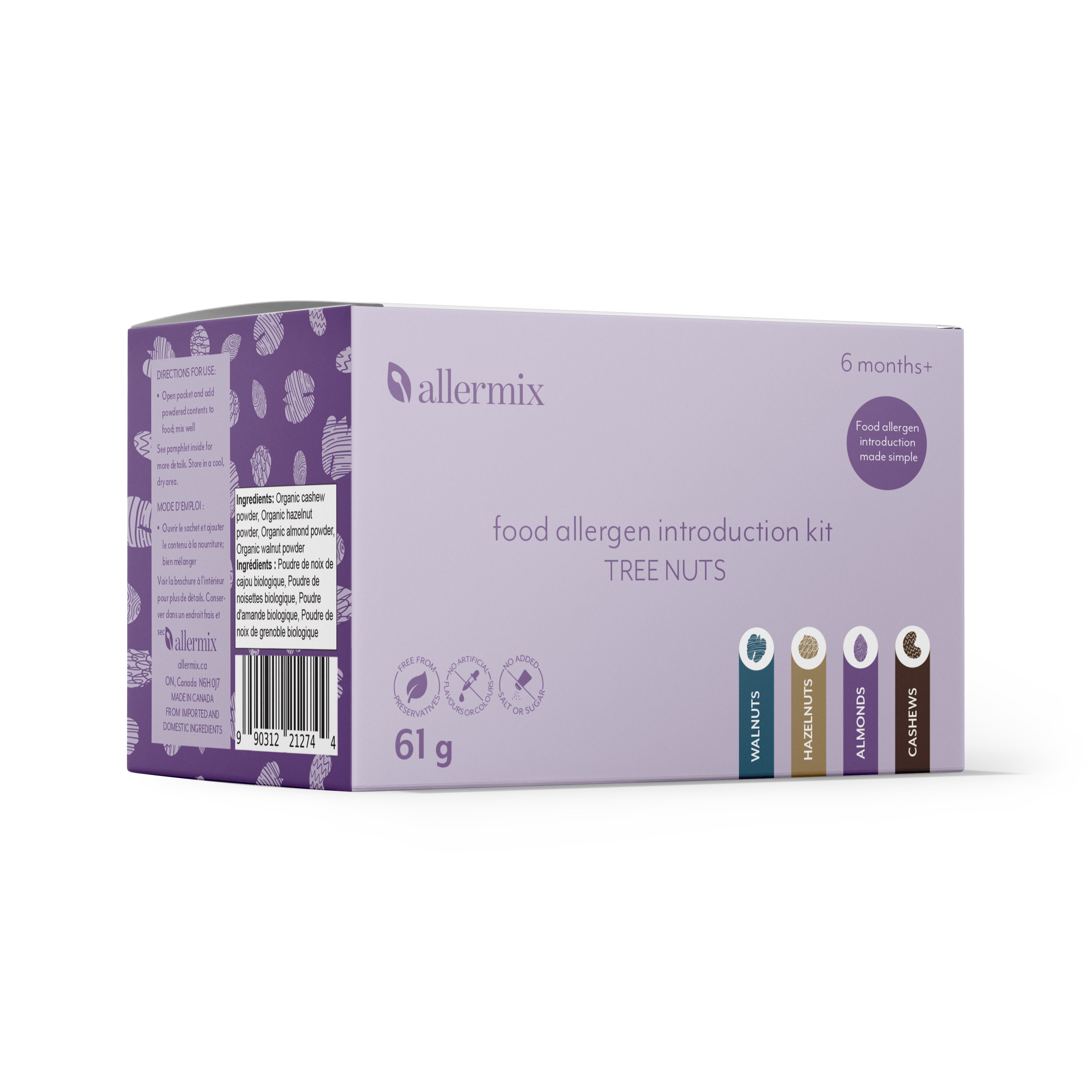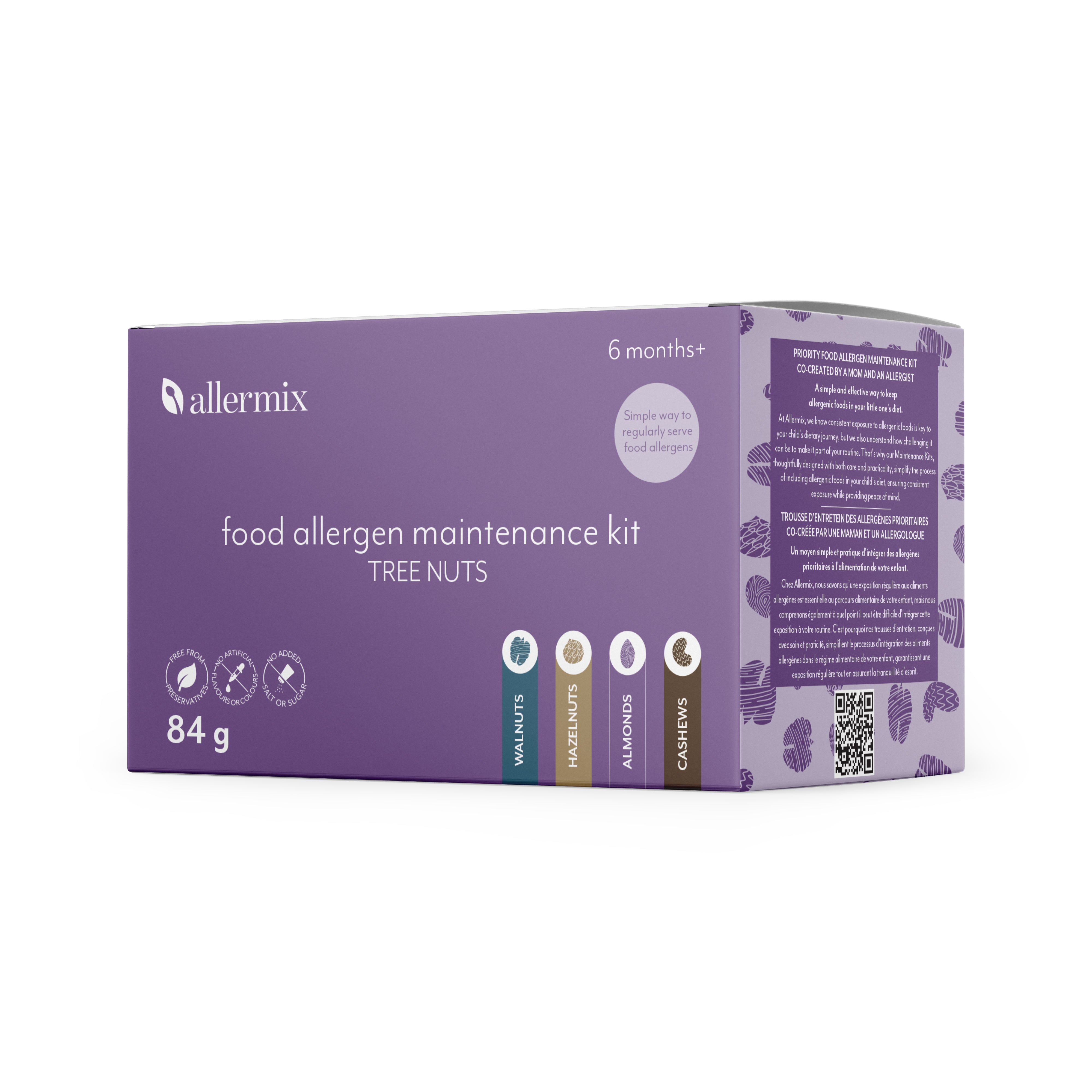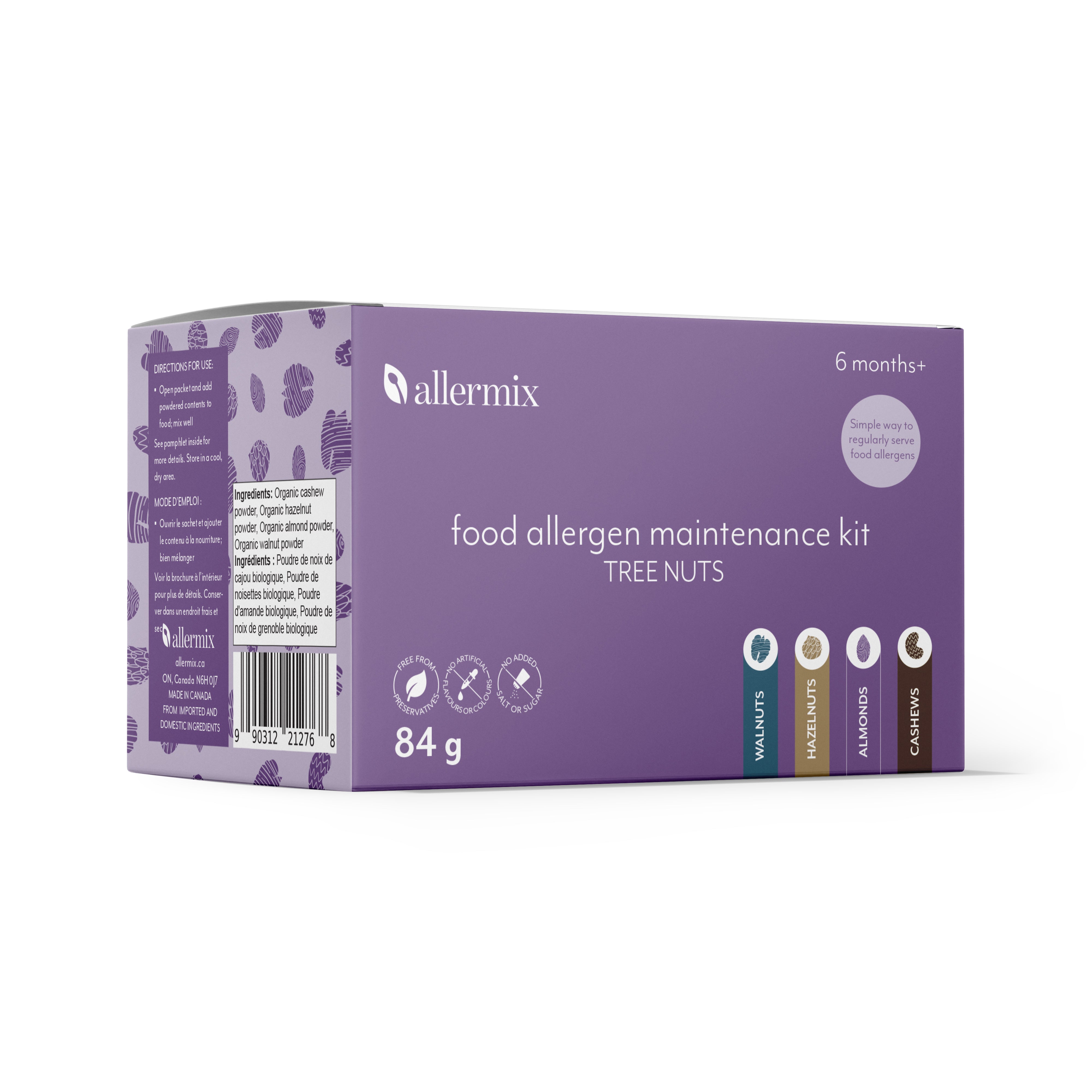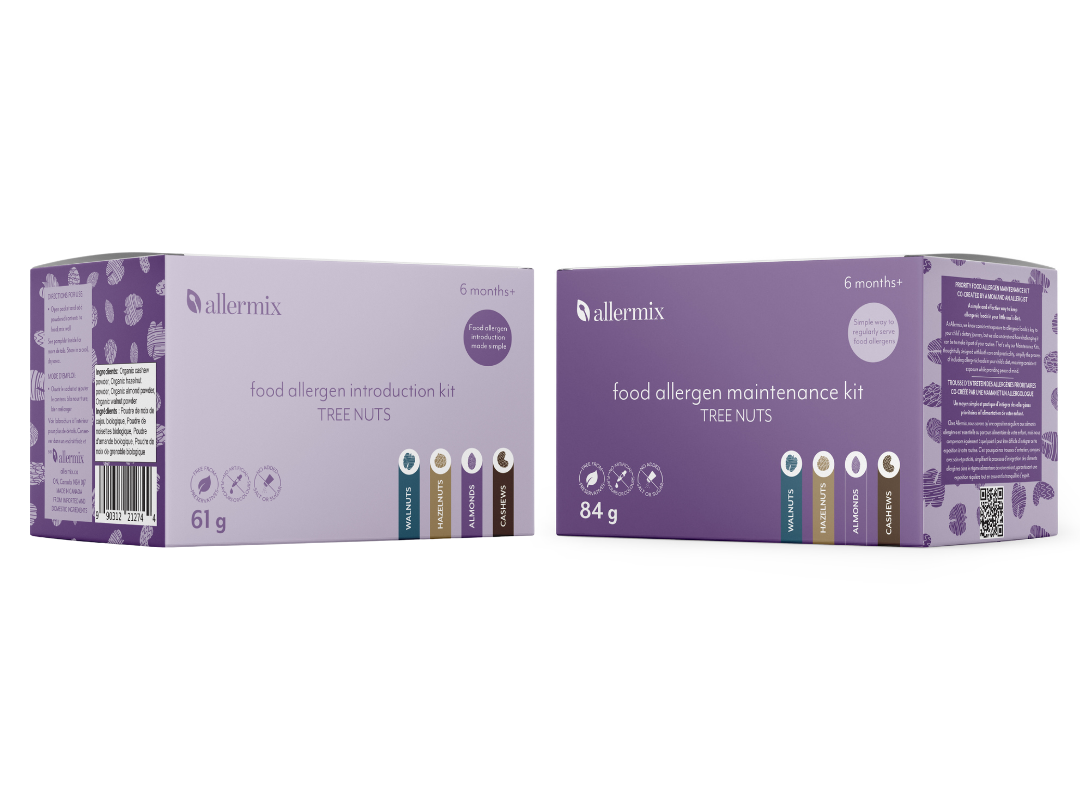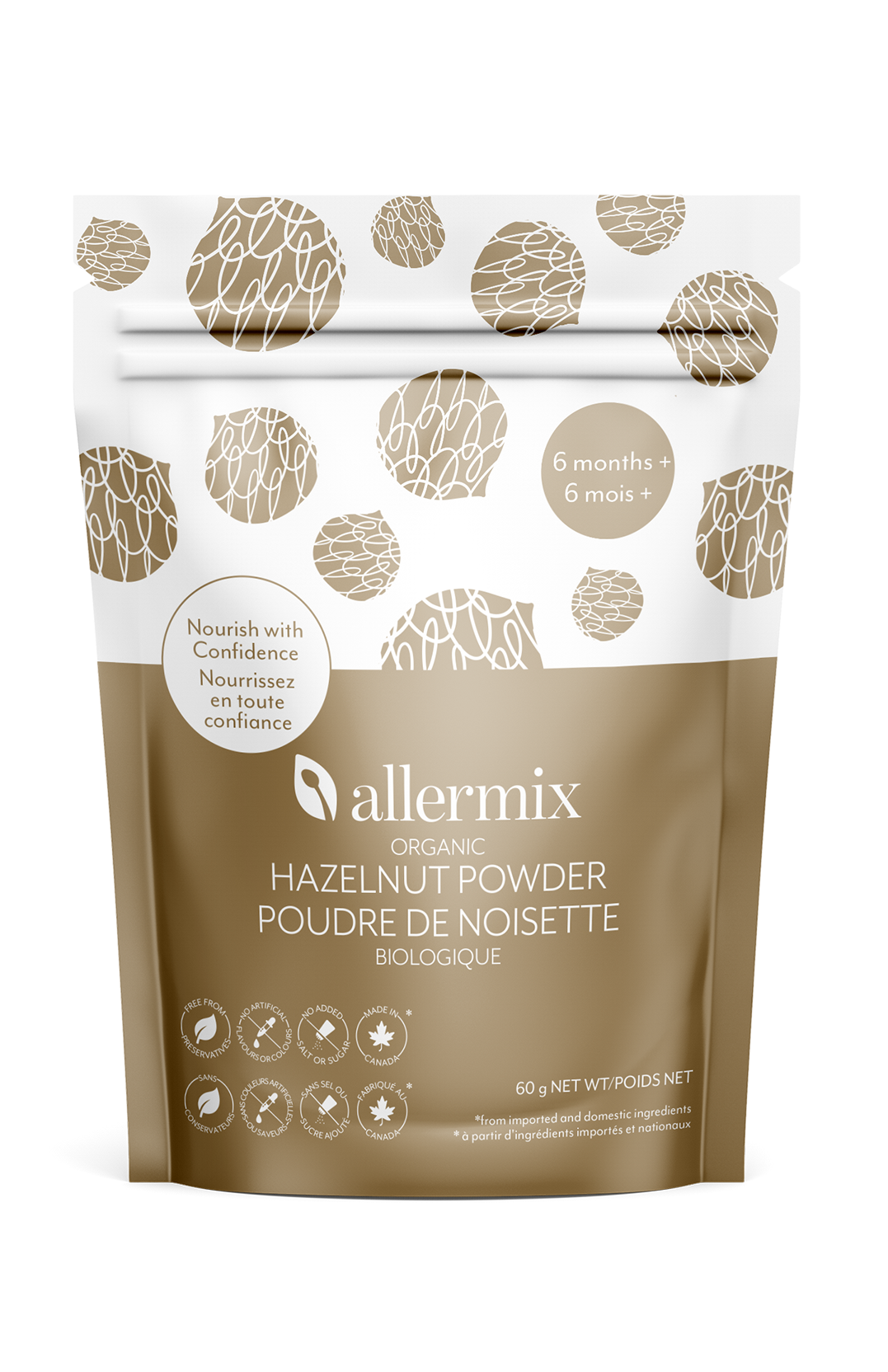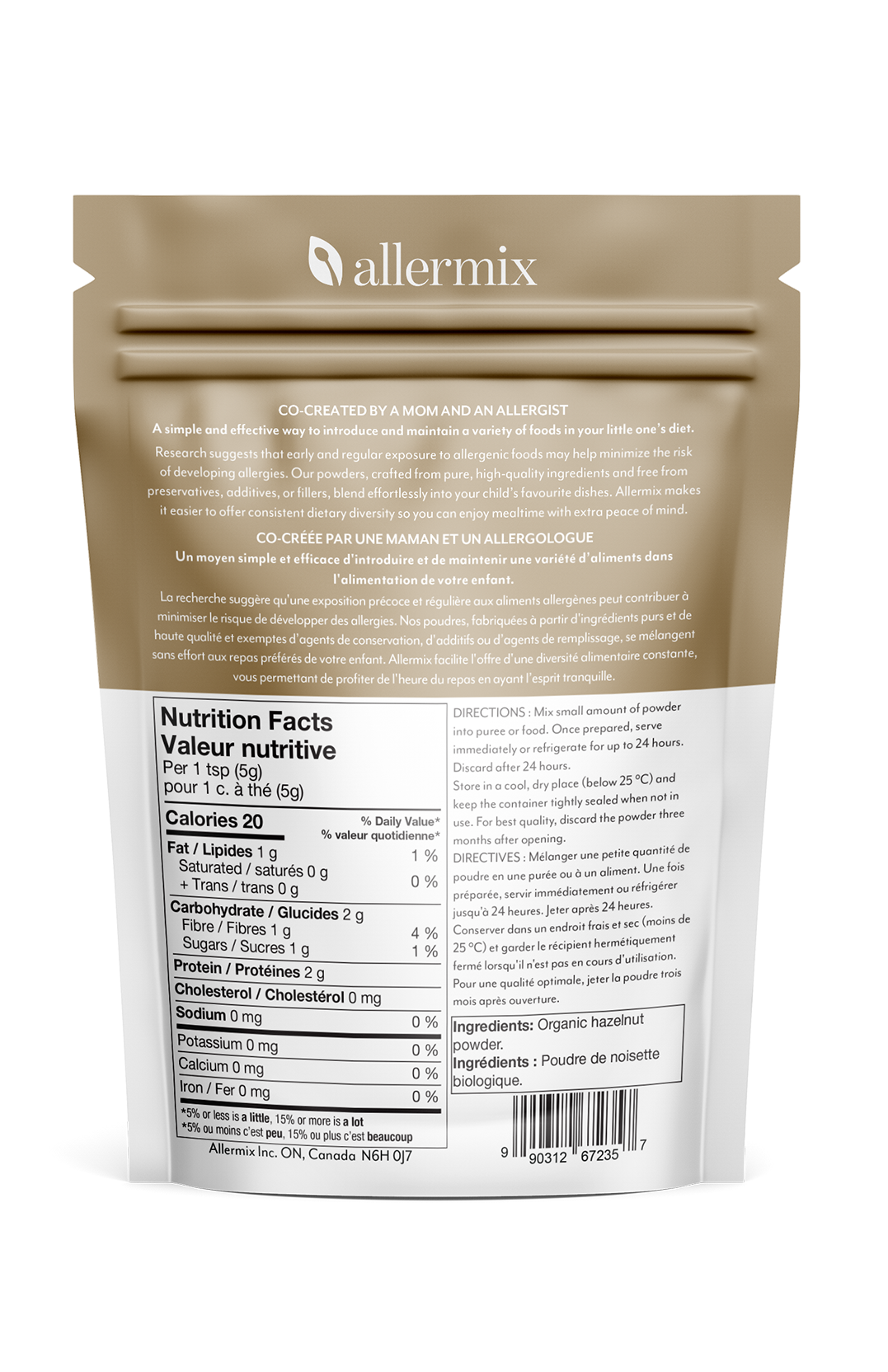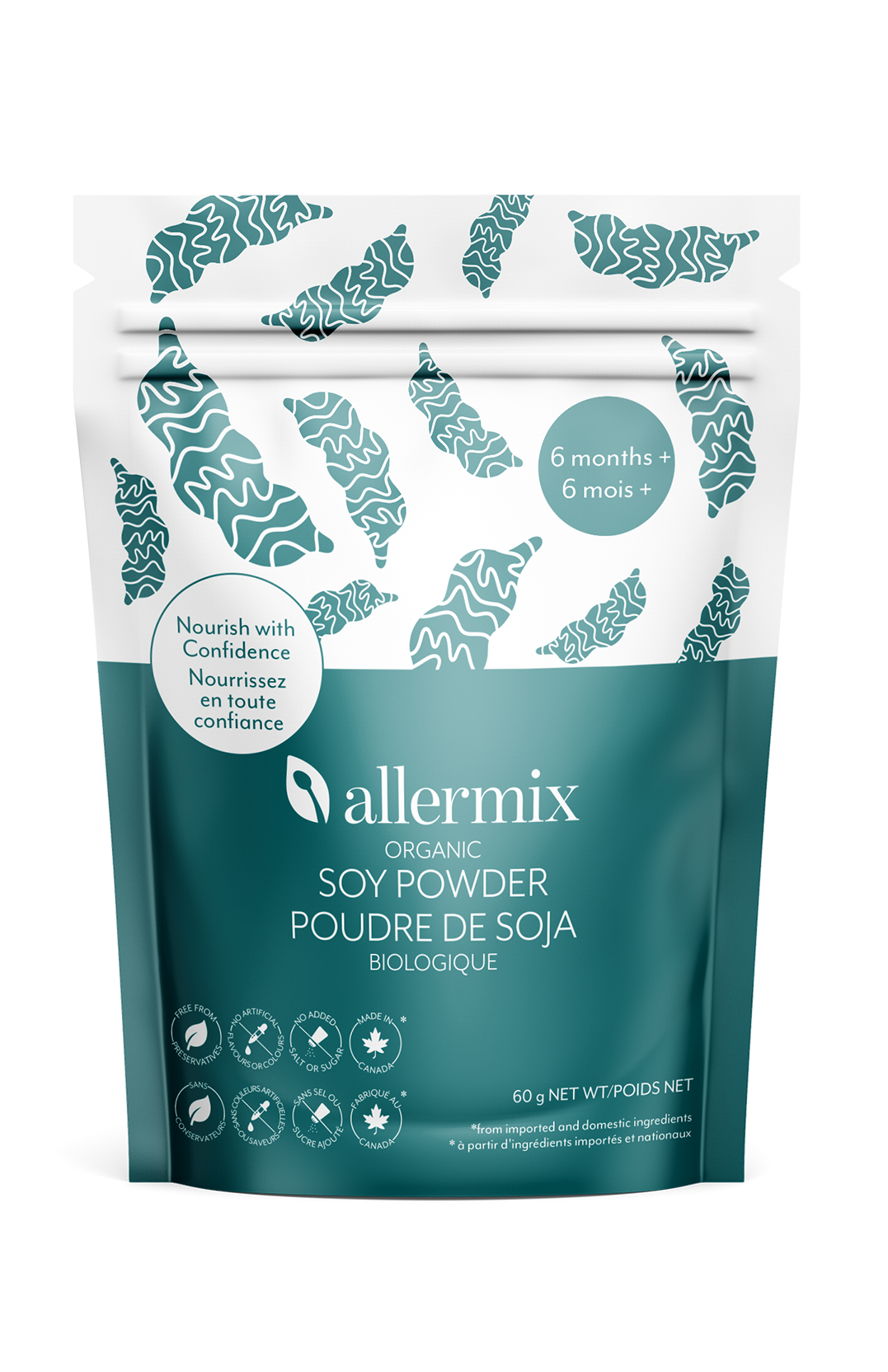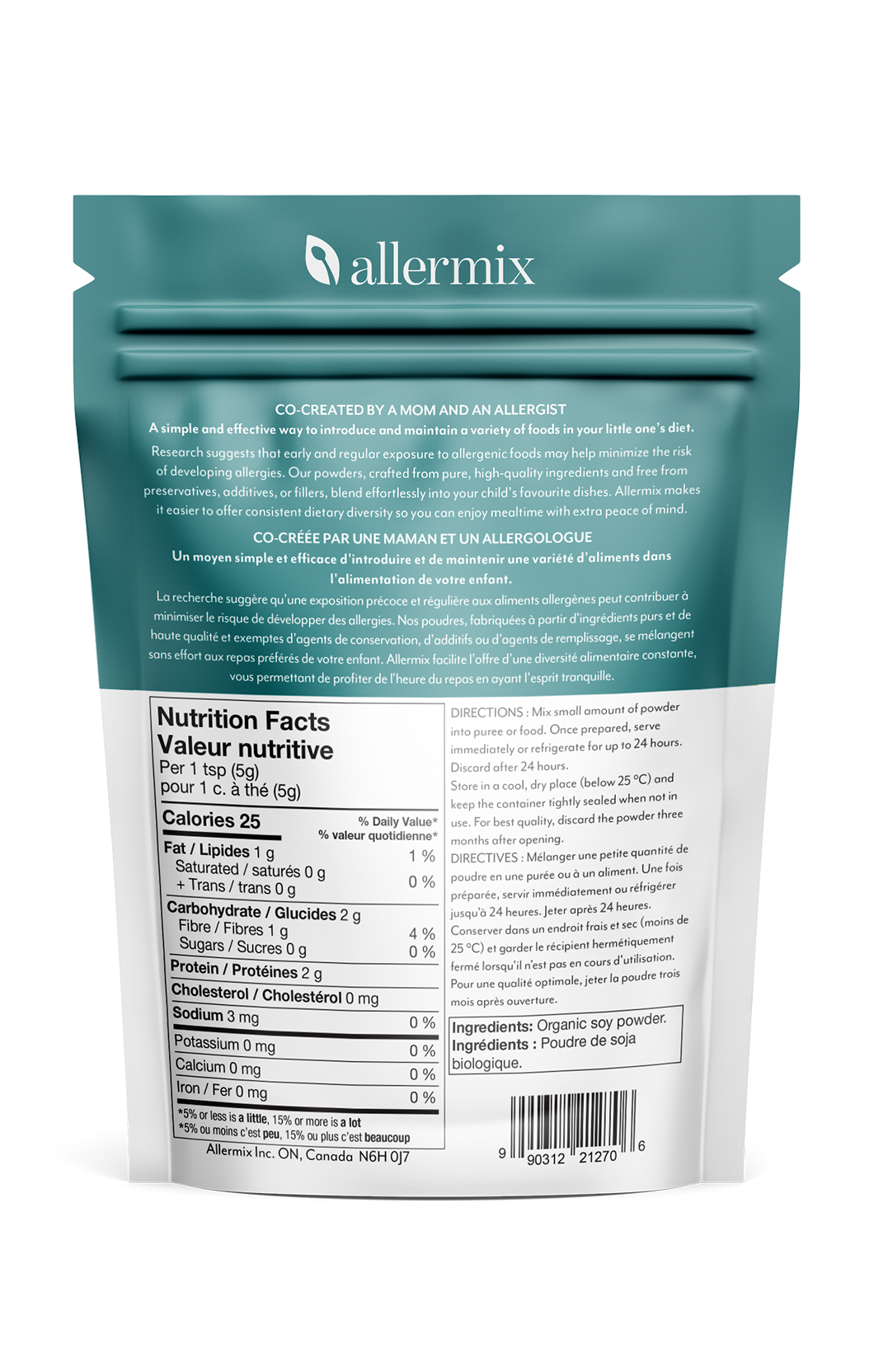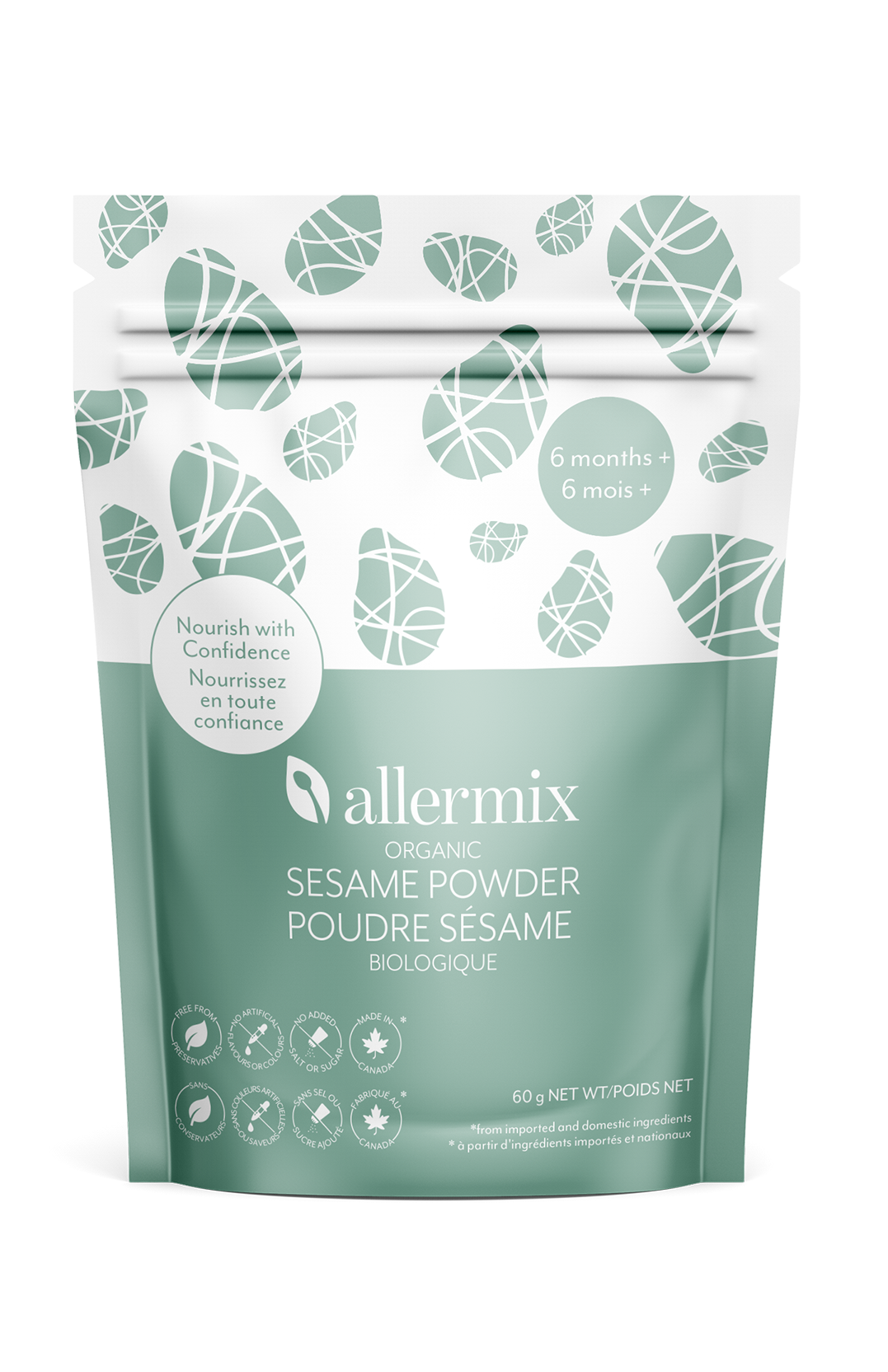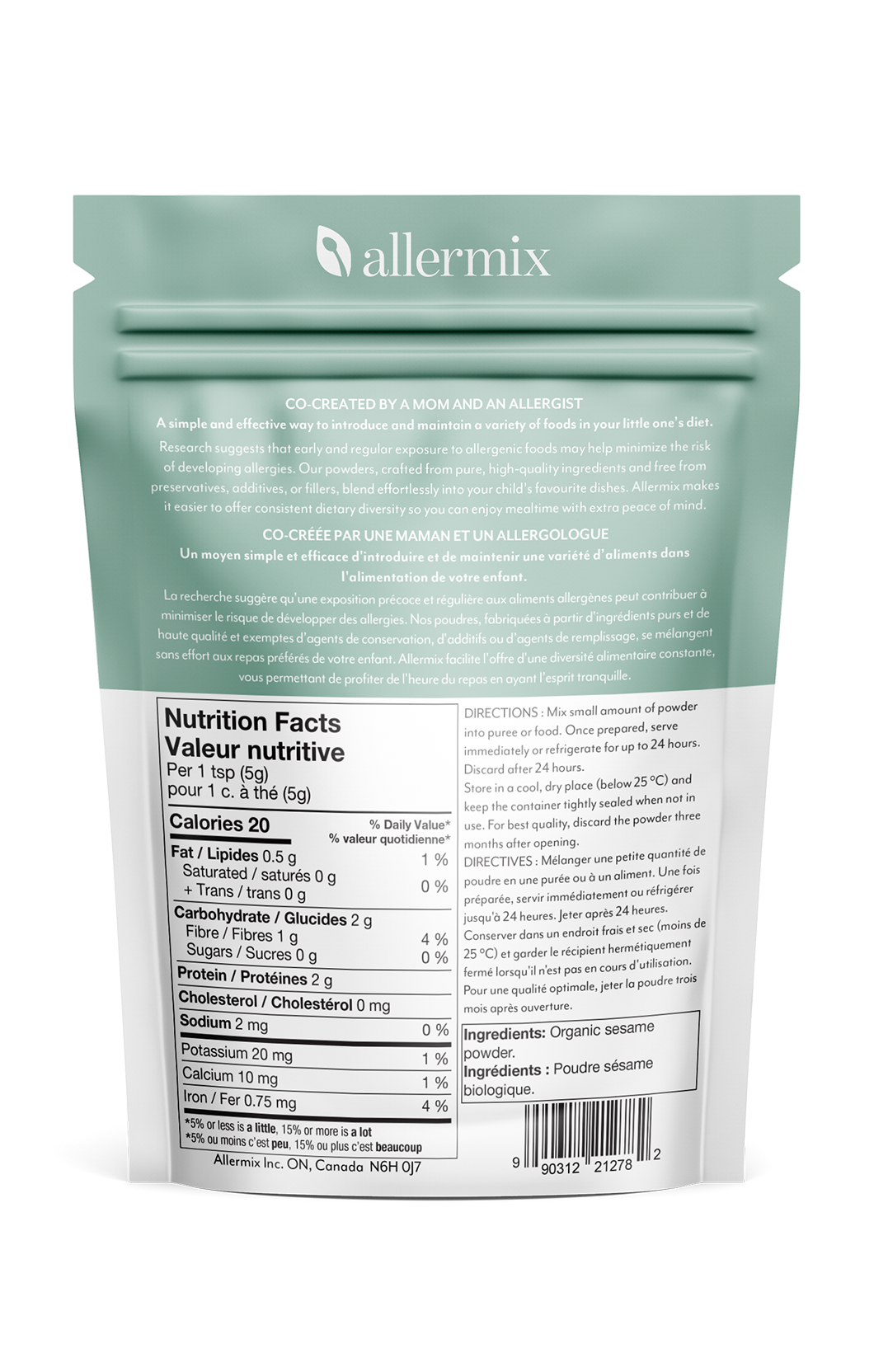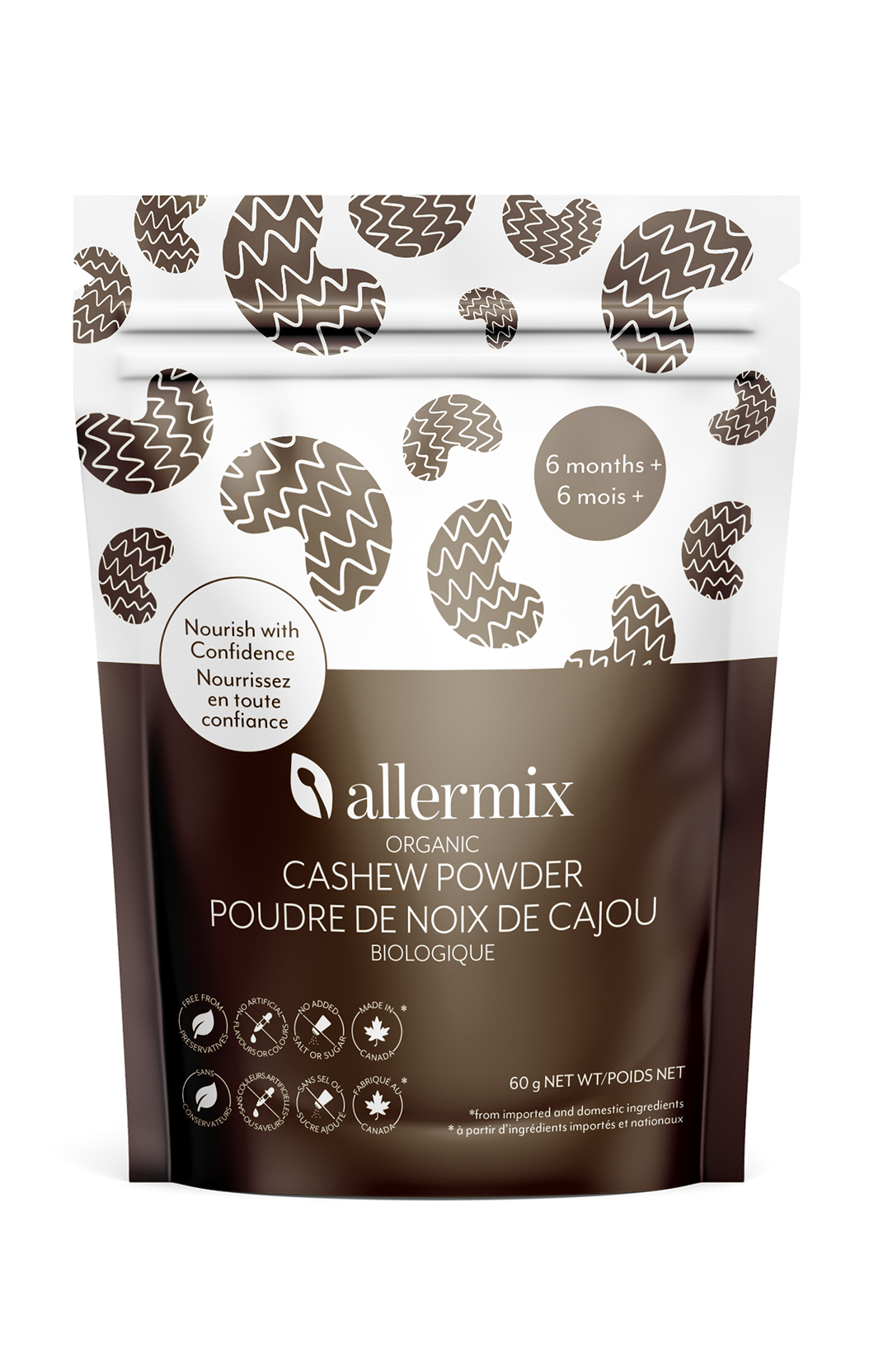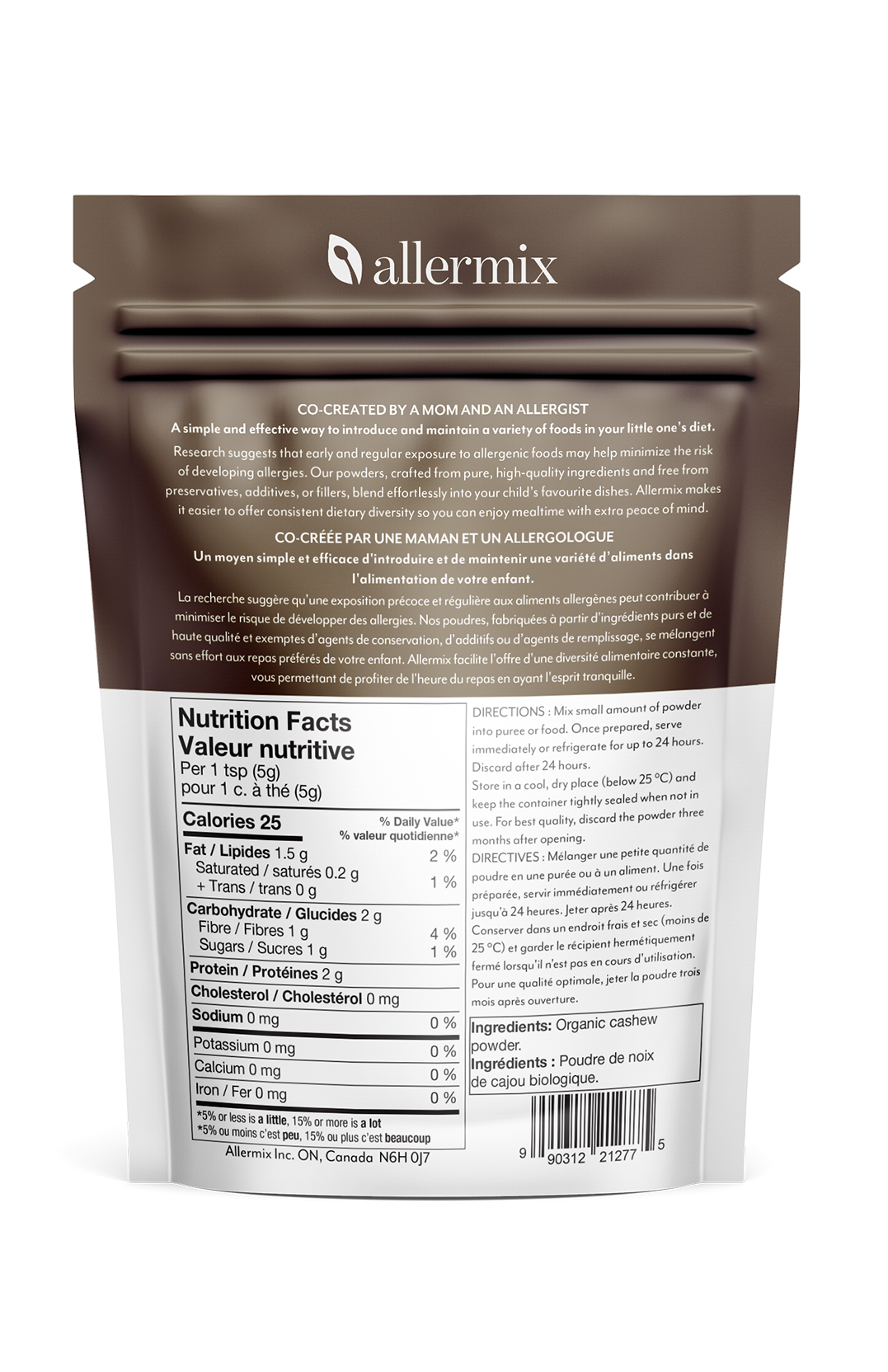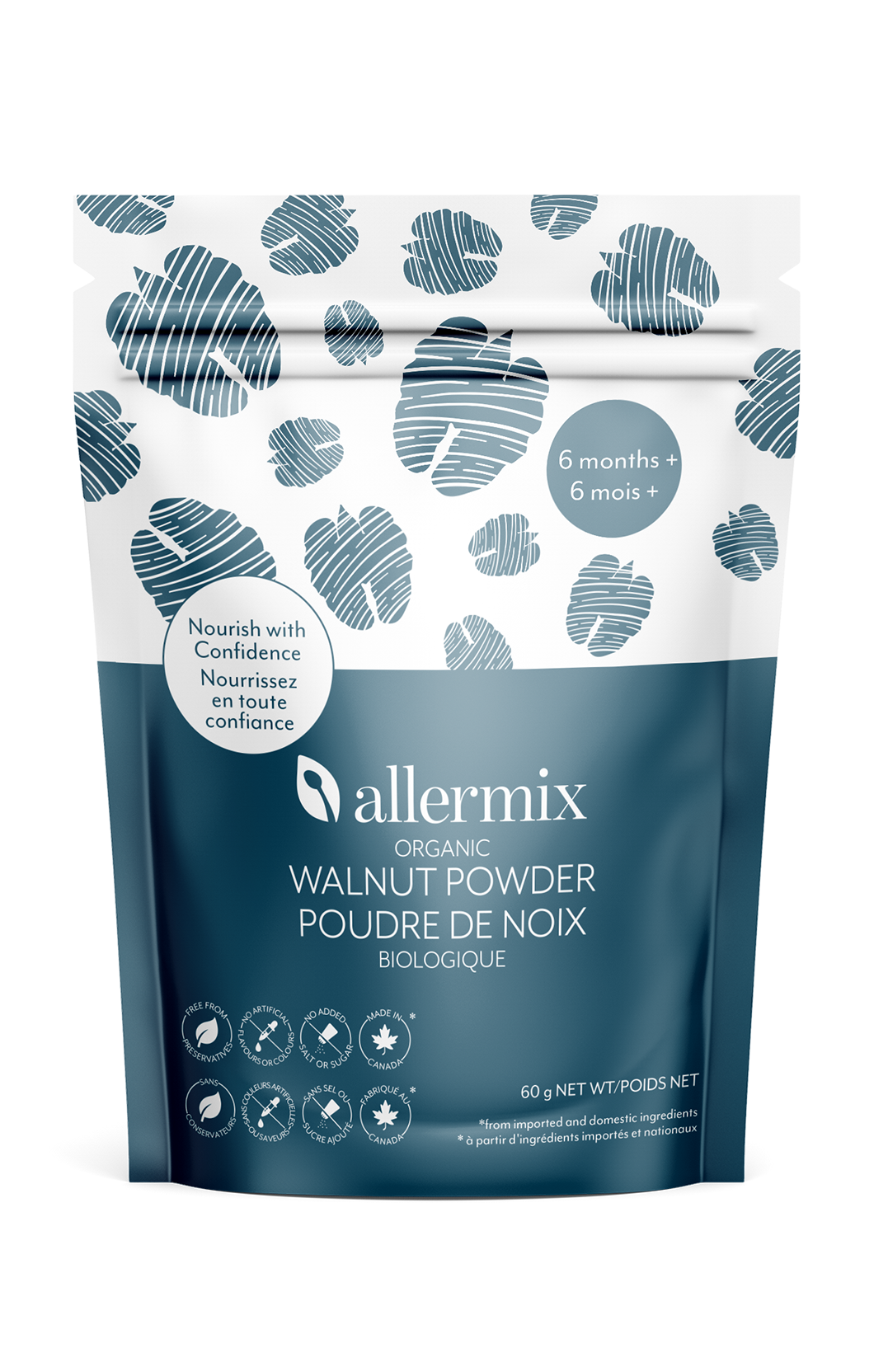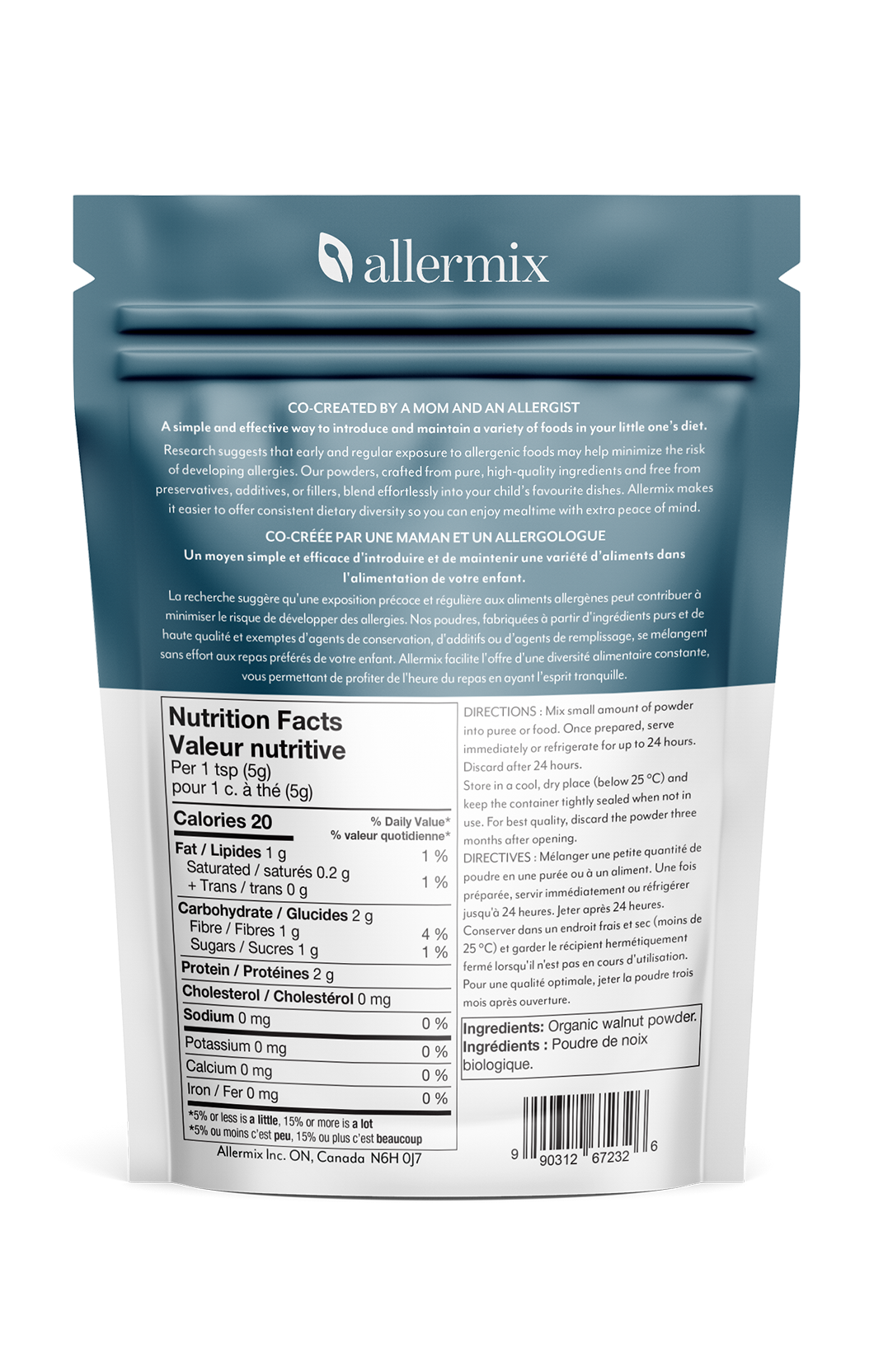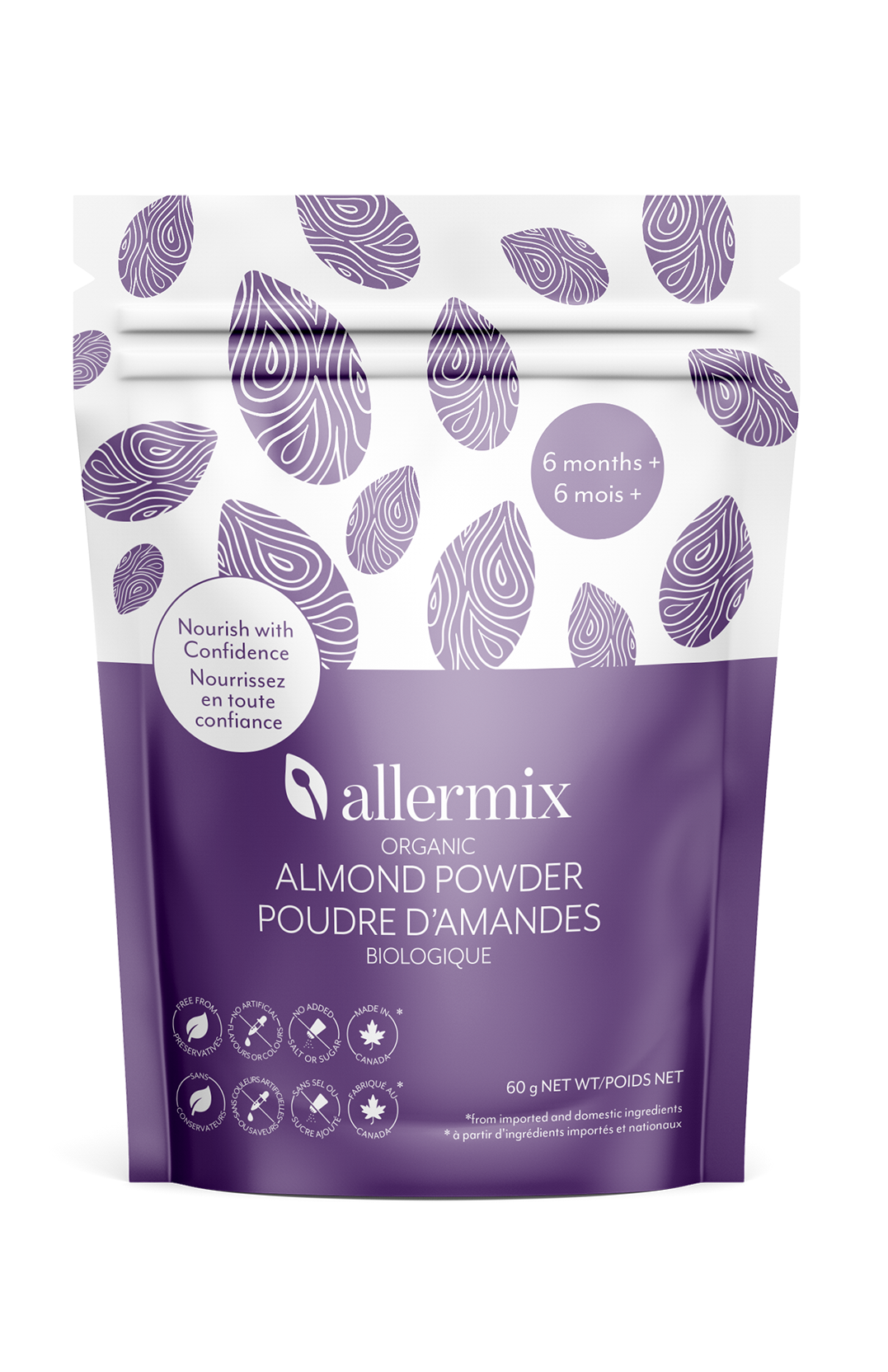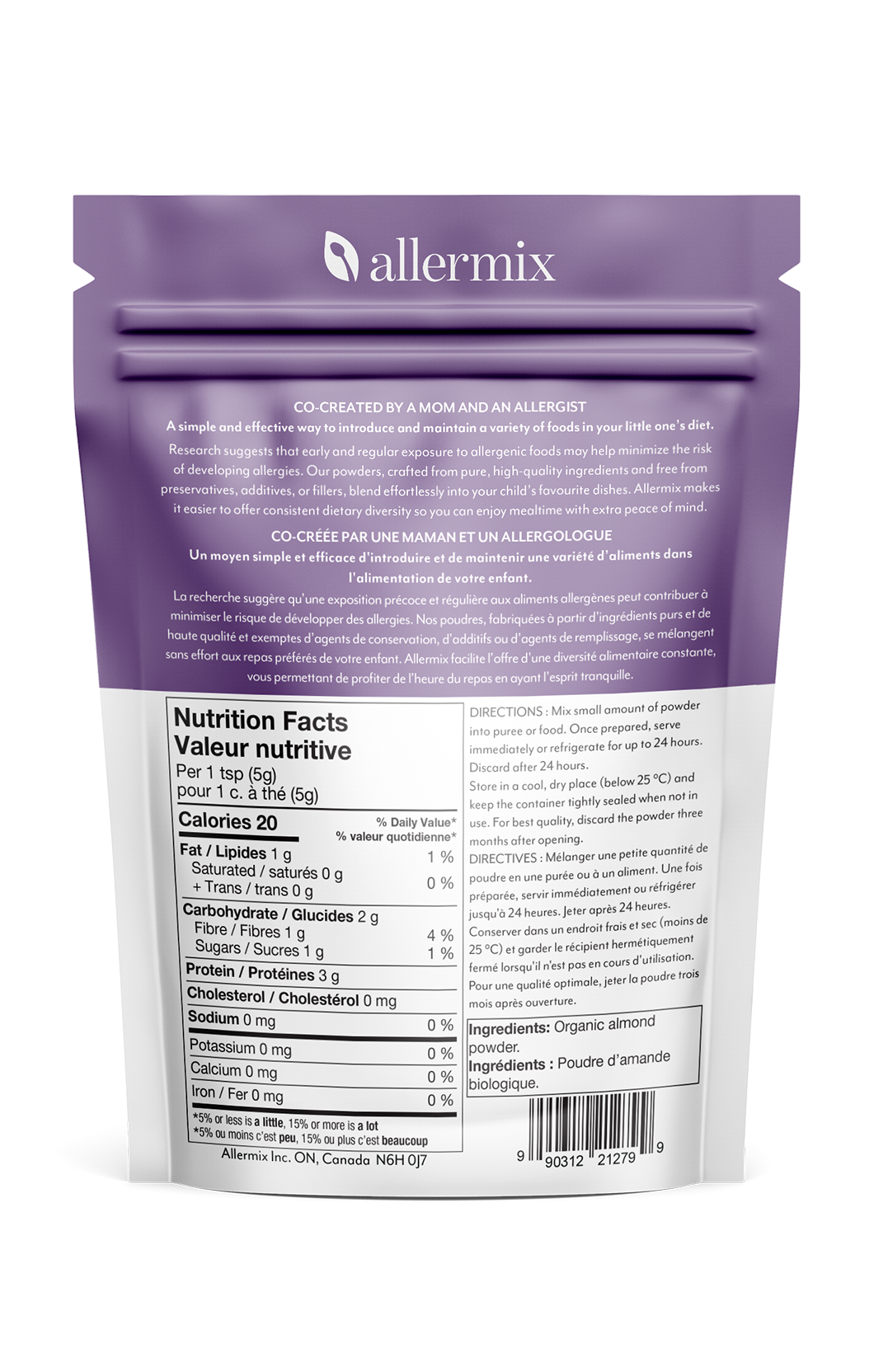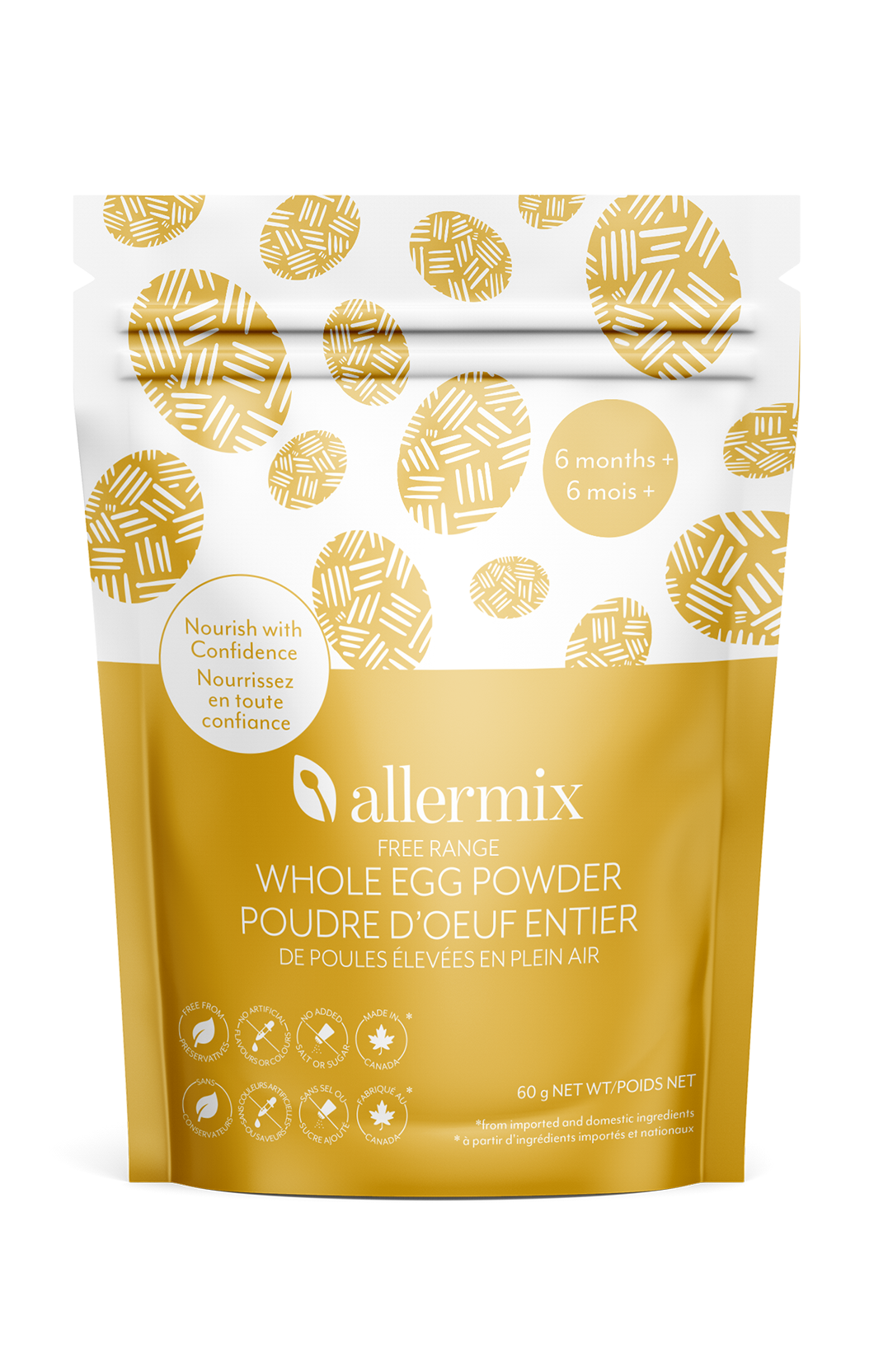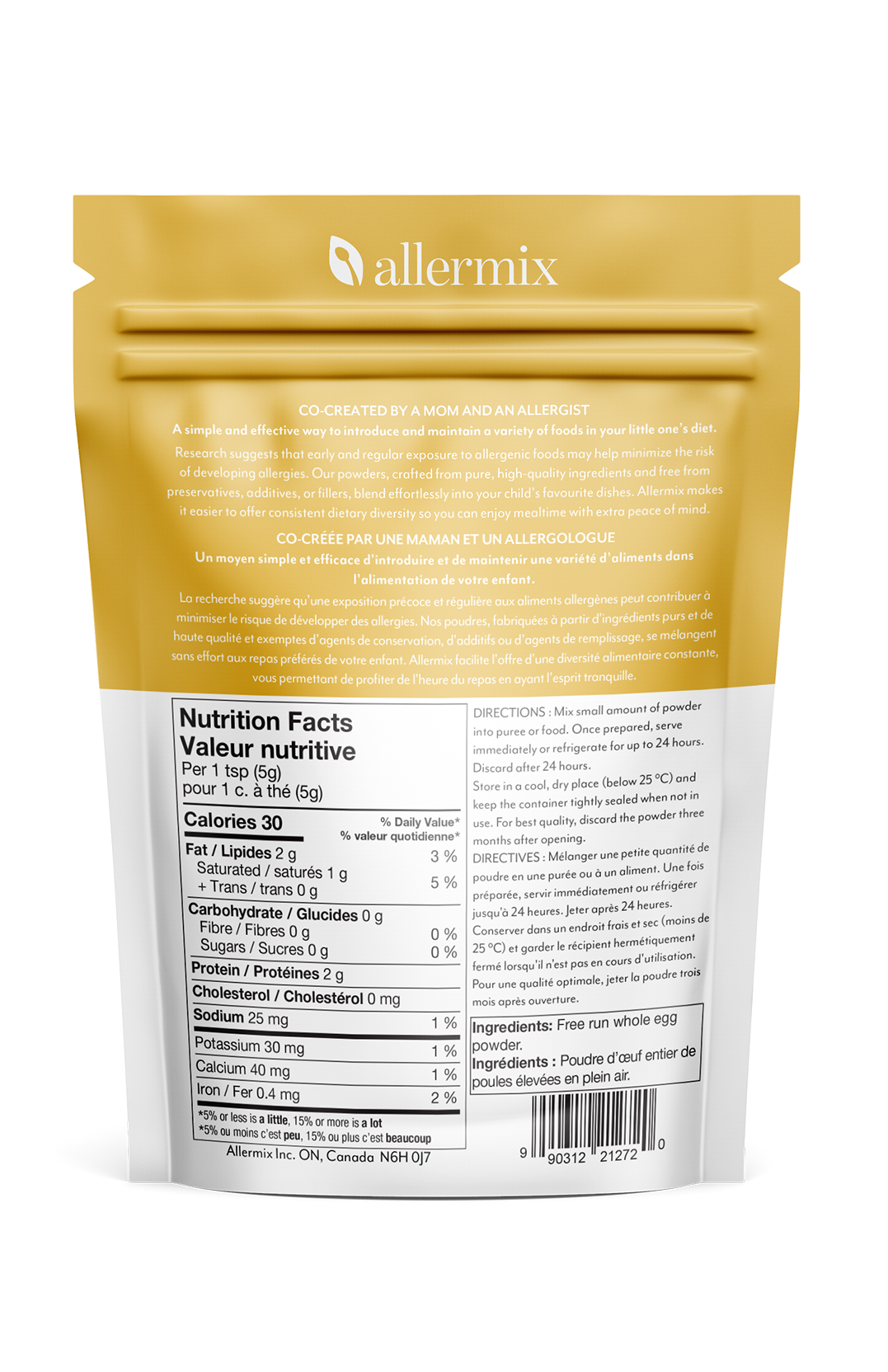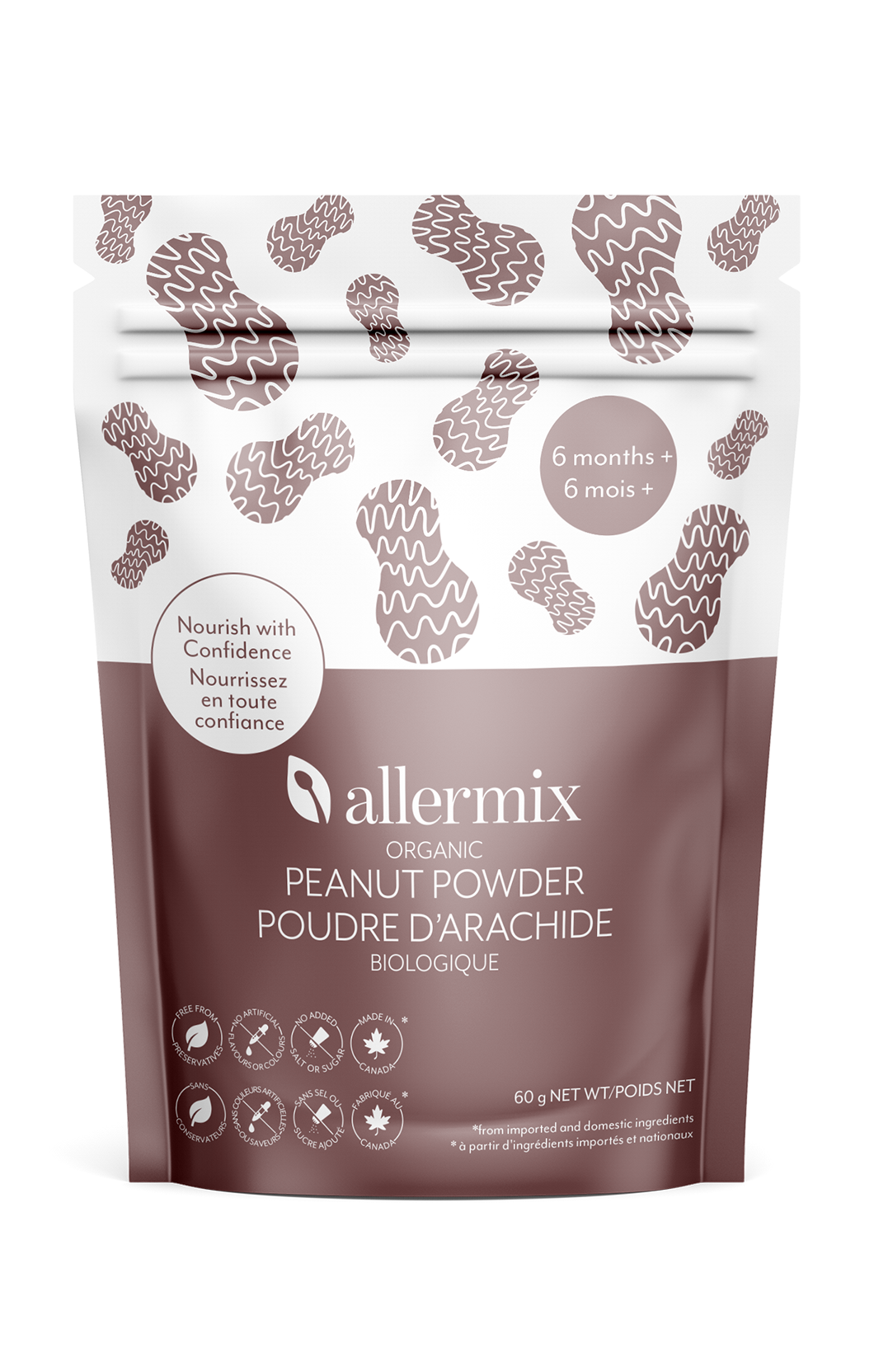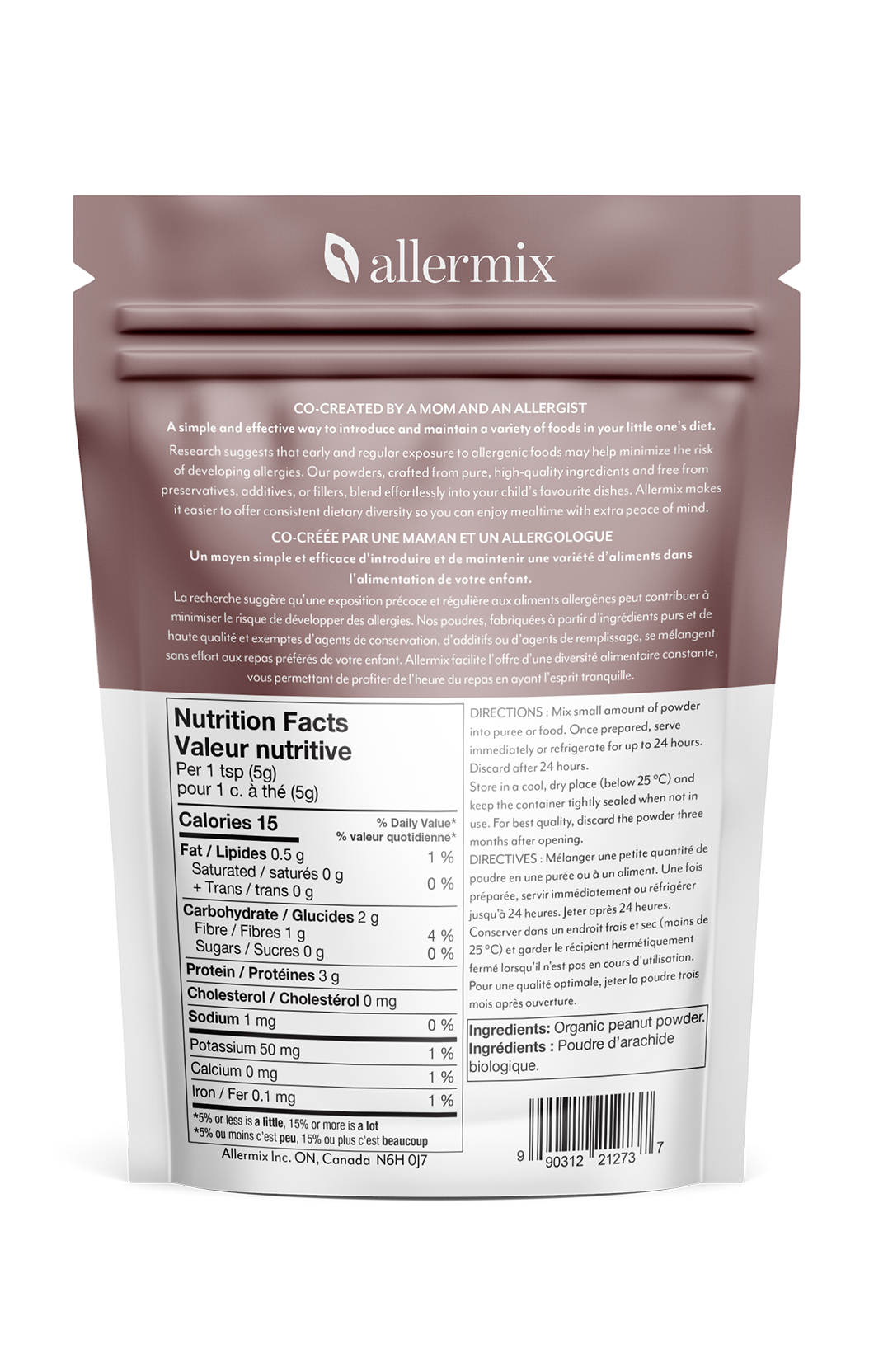
Signs and Symptoms of Food Allergies in Babies

Recognizing Food Allergy Symptoms in Babies: A Canadian Parent’s Guide
Reviewed by Dr. R. Zhu, MD, FRCPC, Allergist & Clinical Immunologist
Starting solids is a huge milestone and if you're a parent, you're probably hearing a lot about early allergen introduction. But what happens when your baby reacts to a food? How do you know if it’s just a bit of tummy trouble… or something more serious, like a food allergy?
Let’s walk through the real signs and symptoms of food allergies in babies, based on the latest Canadian guidelines and expert sources so you know what’s normal, what’s not, and when to take action.
Disclaimer:
This blog is intended for general informational purposes only and is not a substitute for professional medical advice. Always consult your primary care provider/health provider before introducing allergens to your baby, especially if your child has eczema, known allergies, or a family history of allergic conditions.
Table of Contents
- What Is a Food Allergy?
- Signs and Symptoms of Food Allergies in Babies
- What’s Not a Food Allergy?
- When and How to Introduce Allergens in Canada
- What to Do If Your Baby Has a Reaction
- Final Thoughts: You’ve Got This
- Make Allergen Introduction Easier with Allermix
1. What Is a Food Allergy?
A food allergy happens when your baby’s immune system mistakenly sees a food as dangerous and reacts to it. This can lead to a range of symptoms, from mild hives to more severe reactions like anaphylaxis.
In Canada, roughly 7% of children are affected by food allergies and they often show up in the first year of life.
The 10 priority food allergens in Canada responsible for over 90% of food reactions include:
- Peanuts
- Tree nuts
- Cow’s milk
- Eggs
- Fish
- Shellfish
- Wheat
- Soy
- Sesame
- Mustard
2. Signs and Symptoms of Food Allergies in Babies
Food allergy symptoms usually show up within minutes to 2 hours of eating. They can vary from mild to severe. Here’s what to watch for:
1. Skin Reactions
- Red hives or welts
- Swollen lips, eyes, or face
- Itchy skin or rashes
- Flushed cheeks
Tip: Take a photo if you’re unsure. Your doctor can often tell a lot from what it looked like in the moment.
2. Tummy Troubles
- Repeated vomiting (not just a little spit-up)
- Diarrhea
- Gassiness or discomfort
- Blood in the stool (especially with milk or soy)
This can be subtle! A baby who seems fussy or has mucousy poops might actually be reacting to something in their diet.
3. Breathing Issues
- Wheezing or coughing
- Nasal congestion
- Difficulty breathing
- Throat tightness
Even mild respiratory symptoms after eating a new food should be taken seriously, especially if your baby has no cold or other obvious cause.
4. Anaphylaxis (Severe Allergic Reaction)
- Difficulty breathing or swallowing
- Swelling of the tongue or throat
- Pale, blue-ish skin
- Sudden lethargy or unresponsiveness
Call 911 immediately and use an epinephrine auto-injector (such as an EpiPen®) if prescribed.
3. What’s Not a Food Allergy?
Sometimes babies react to new foods, but it’s not an allergy. For example:
- A rash from drooling or acidic foods
- Diaper rash after eating foods
- Gassiness from fiber-rich foods
- Lactose intolerance (this isn’t immune-related)
Allergies involve the immune system. Sensitivities or intolerances don’t, and they tend to cause less severe symptoms.
4. When and How to Introduce Allergens in Canada
According to multiple Canadian allergy experts and guidelines, introducing allergenic foods around 6 months of age (but not before 4 months) can help improve tolerance to these foods and reduce the risk of food allergies.
See our peanut introduction guide here.
Safe feeding tips:
- Introduce new foods one at a time
- Offer allergenic foods during the day (not right before bed)
- Monitor your baby for 2 hours after eating
- Continue offering that food regularly (2–3× per week) if there’s no reaction
5. What to Do If Your Baby Has a Reaction
If you notice symptoms after your baby eats a new food:
- Stop feeding that food
- Write down what your baby ate and when
- Take a photo of the reaction (if possible)
- Contact your health care provider for follow-up
For severe reactions such as trouble breathing, swelling of the tongue, or collapse, call 911 immediately.
6. Final Thoughts: You’ve Got This
Introducing new foods, especially common allergens, can feel scary, but knowledge is power. By knowing what to look for and having a plan, you can give your baby a healthy start without unnecessary stress.
And remember: most babies don’t develop food allergies—and those who do can still thrive with the right support.
7. Make Allergen Introduction Easier with Allermix
Allermix offers a simple, guided approach to introducing allergens like peanut. Our introduction and maintenance kits are easy to mix into baby-safe foods and help support consistent, structured exposure.
Allermix is not a diagnostic or treatment tool. Always consult your primary care provider/health provider before introducing allergens in high-risk children.
Explore Allermix kits and take the first step toward confident early allergen introduction today.
Sources & Trusted Canadian References
Canadian Paediatric Society – Reducing the risk of food allergy
Food Allergy Canada – Early Introduction Guideline





